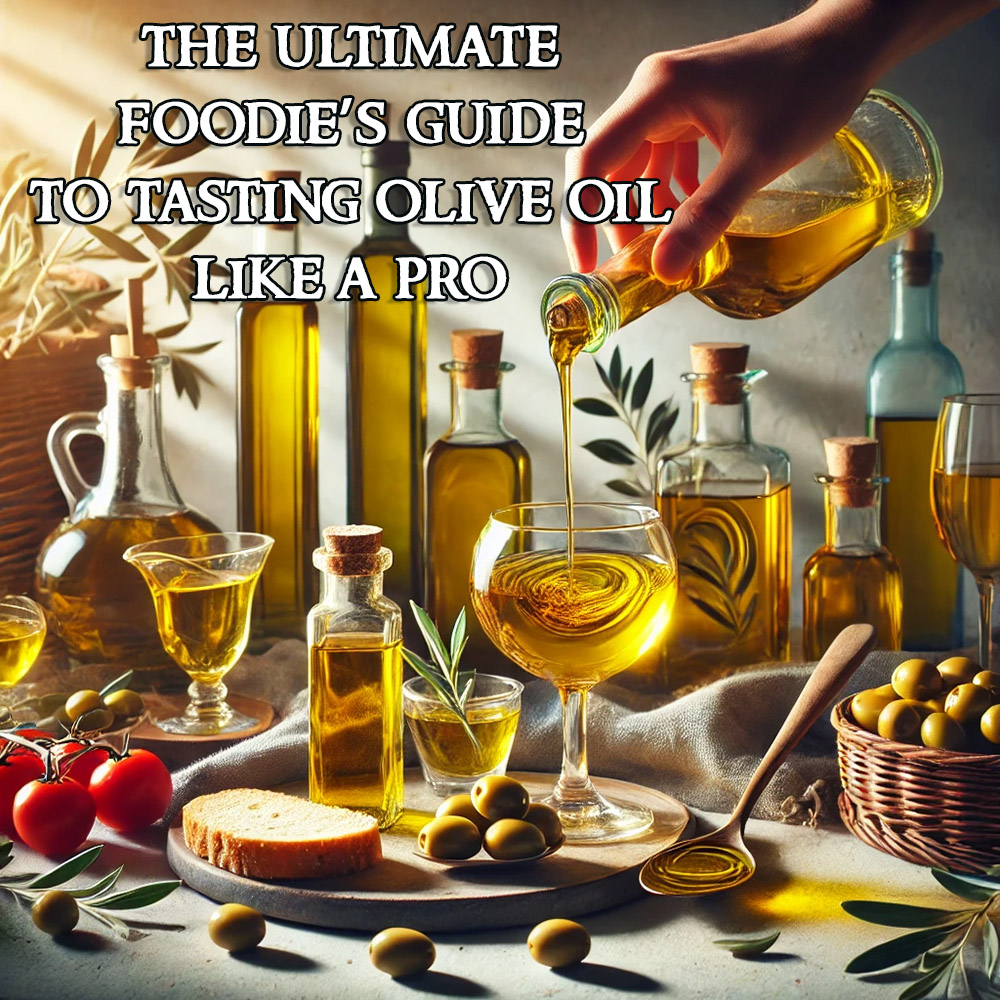So, you fancy yourself a foodie? You know your way around a wine tasting, can spot a perfectly ripe avocado from 10 feet away, and have strong opinions on the best cheese pairings. But have you ever truly tasted olive oil? Not just drizzled it on a salad or dunked a piece of bread in it—but really, properly tasted it?
Welcome to the wonderful world of olive oil tasting, where every swirl, sniff, and sip reveals a depth of flavor you never knew existed. Whether you’re a curious home cook or a dedicated olive oil aficionado, this guide will have you tasting olive oil like a pro in no time.
Step 1: Understand What You’re Looking For
Before we dive in, let’s set the record straight: not all olive oil is created equal. Similar to wine, olive oil comes in a spectrum of flavors, qualities, and complexities. The key is knowing how to identify the good stuff.
When tasting olive oil, you’re looking for three primary things:
- Fruitiness – Fresh, bright, and sometimes a little grassy. This indicates high-quality olives.
- Bitterness – A pleasant, peppery bitterness tells you the oil is rich in antioxidants.
- Pungency – That slight burn at the back of your throat? That’s a good thing! It’s a sign of fresh, well-made olive oil.
Step 2: Set Up Your Tasting Like a Pro
Now that you know what to look for, it’s time to set up your tasting. Just like wine, olive oil has tasting protocols (yes, really!). Here’s how to do it:
What You Need:
- Small glasses or cups (dark-colored, if possible, so you’re not influenced by the color)
- A tasting spoon (or sip directly—more on that in a moment!)
- A glass of water and some plain crackers (to cleanse your palate)
- A variety of high-quality olive oils, ideally from different regions or infused with different flavors
Pro Tip: Taste olive oil on its own before pairing it with food. This helps you fully experience the flavor profile without distractions.
Step 3: The Swirl, Sniff, and Sip Method
Now, let’s get tasting! Follow these three steps for a full olive oil appreciation experience:
1. The Swirl
Hold your cup of olive oil in one hand and gently warm it with the other. Give it a good swirl—this releases the oil’s aroma. The fresher the oil, the stronger and more vibrant the scent.
2. The Sniff
Stick your nose right into the cup and take a deep inhale. What do you smell? Fresh-cut grass? Ripe tomatoes? A little bit of pepper? If it smells musty, waxy, or like old nuts, you’ve got yourself a dud (a sign of rancidity).
3. The Sip
Take a small sip, but don’t swallow just yet! Let it coat your tongue, then breathe in slightly through your teeth to aerate the oil (it’ll feel weird at first, but trust us). This helps you pick up nuanced flavors and textures.
Step 4: Identify the Flavor Profiles
Once you’ve sipped and savored, it’s time to break down the flavors. Here’s a general guide to what different olive oils might taste like:
Mild Olive Oils:
✅ Buttery, smooth, slightly nutty
✅ Hints of apple, almond, or banana
✅ Ideal for baking, drizzling over fish, or pairing with delicate cheeses
Medium Olive Oils:
✅ Balanced, with a fresh, grassy taste
✅ Notes of green herbs, tomatoes, or artichoke
✅ Perfect for vinaigrettes, pasta, or finishing vegetables
Robust Olive Oils:
✅ Bold, peppery, with a strong kick
✅ Intense bitterness and spice (that signature throat burn!)
✅ Best for dipping bread, hearty dishes, or anything that needs a punch of flavor
Step 5: Recognizing Quality vs. Bad Olive Oil
Just like with wine, some olive oils are premium quality while others are… well, let’s just say they’re better left on the shelf. Here’s how to tell the difference:
✅ High-Quality Olive Oil:
- Smells fresh and vibrant
- Tastes bright, fruity, or peppery
- Leaves a clean, crisp sensation in your mouth
Bad Olive Oil:
- Smells waxy, musty, or stale
- Tastes flat, greasy, or rancid
- Leaves an unpleasant, lingering aftertaste
Pro Tip: Always check the harvest date! Olive oil is best consumed within a year of production. Anything older than that…time to replace it.
Step 6: Put Your Skills to the Test!
Now that you’re an olive oil-tasting expert, it’s time to experiment with flavors! Try different infused oils and see how their profiles change when paired with food. Make a batch of white or basmati rice and sample infused oils in a bit of the rice.
Drizzle Garden Infuzionz Bruschetta Blend Olive Oil over fresh mozzarella
Brush NY Pizza Blend Olive Oil on homemade pizza dough
Use All Purpose Blend Olive Oil in a light, zesty salad dressing
Spice up pasta with a Chili & Garlic Blend Olive Oil drizzle
The more you taste, the more you’ll develop your palate—and the more exciting your cooking will become!
Final Thoughts: Taste Like a Pro, Cook Like a Chef
Tasting olive oil is an art form—one that makes you appreciate just how complex and wonderful this golden elixir really is. Next time you pick up a bottle, take a moment to swirl, sniff, and sip, and let your taste buds do the rest.
So, foodie friends, which olive oil are you most excited to taste next? Drop a comment below and let’s talk flavor!

